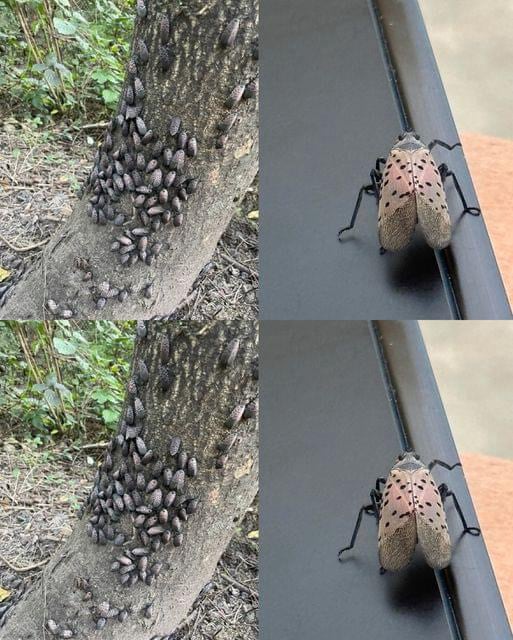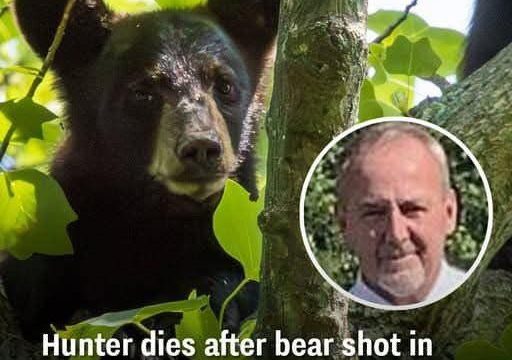The spotted lanternfly, also known as Lycorma delicatula, is an insect that you should eliminate on sight if you happen to come across it. Originally from China, this invasive pest was first discovered in the United States in 2014, specifically in Pennsylvania. Since then, the lanternfly has spread across several states, causing serious damage to agriculture and the environment. Its presence is not just a nuisance—it’s a real threat to our plants and trees.

This invasive species feeds on the sap of various trees and plants, draining them of their vitality. The lanternfly uses its needle-like mouthparts to pierce the bark and suck out the sap, which weakens the plants and leaves them vulnerable to further damage. The problem doesn’t stop there. Lanternflies excrete a sugary substance known as honeydew, which coats the surface of plants and leads to the growth of sooty mold. This mold interferes with the plant’s ability to photosynthesize, compounding the damage and posing a significant threat to the health of entire ecosystems.
How to Identify the Lanternfly
Fortunately, the lanternfly is relatively easy to identify, making it simpler to take action once you know what to look for. Adult lanternflies are about an inch long, with distinct gray wings covered in black spots and striking red and black underwings that are visible when they fly. The combination of these colors makes them unmistakable. The nymphs, or younger versions of the insect, go through a few different stages of development before becoming adults. Early-stage nymphs are black with white spots, and as they mature, they turn a bright red color before eventually developing their wings.
This striking appearance may make the lanternfly look almost beautiful, but don’t be fooled—it’s a serious threat. This insect has no place in the American ecosystem and has the potential to devastate crops and trees that are crucial to both our agriculture and natural environment.
Why You Should Get Rid of Lanternflies Immediately
The reason the spotted lanternfly is such a menace lies in its diet. Lanternflies feed on over 70 different species of plants, including grapevines, fruit trees, and hardwood trees. Their feeding habits can lead to weakened plants, decreased crop yields, and even the death of the plants they infest. The honeydew they excrete not only attracts other pests but also fosters the growth of sooty mold, which can cover entire plants. This dark mold reduces the plant’s ability to perform photosynthesis, further weakening it and limiting growth.
The economic impact is substantial as well. Lanternflies threaten vineyards, fruit orchards, and various other agricultural crops, potentially causing millions of dollars in damages if their spread is not controlled. They also affect the health of trees in our forests and parks, posing a significant threat to both commercial and environmental interests. That’s why it’s so important that everyone takes action if they see this insect.
What to Do If You See a Lanternfly
If you see a lanternfly, you should act immediately. The simplest thing to do is to squash any adults or nymphs you come across. Though it may seem harsh, killing these pests on sight is necessary to help control their population and minimize their impact on local ecosystems.
If you happen to find their egg masses, it’s equally important to destroy them. Lanternfly egg masses look like grayish-brown mud smears, typically found on tree trunks, rocks, or even outdoor furniture. To eliminate the eggs, scrape them into a plastic bag filled with alcohol or hand sanitizer, which will effectively kill the eggs and prevent them from hatching. Destroying these egg masses is crucial because each one can contain between 30 and 50 eggs, meaning that eliminating even a few masses can make a significant difference in preventing the next generation from spreading.
The Importance of Taking Action
Stopping the spread of the lanternfly is not just about protecting individual trees or gardens—it’s about protecting our larger ecosystem and agricultural industry. Lanternflies have no natural predators in the United States, which means their population can grow quickly and without control unless people take proactive measures. Every lanternfly destroyed and every egg mass eliminated helps prevent future damage to our environment.
The agricultural impact of these insects cannot be overstated. The grape industry, in particular, is highly vulnerable, with vineyards being a favorite target of lanternflies. This poses a threat not only to grape growers but also to related industries, such as wineries, and ultimately affects our economy. Fruit growers, too, are at risk, with apple and peach orchards under threat from these invasive pests.
It’s crucial for everyone to stay vigilant. If you see a lanternfly or its egg masses, take immediate action. You can also report sightings to local agricultural departments or extension services so that officials can keep track of infestations and take further measures to control the spread.
In conclusion, if you ever spot a spotted lanternfly, get rid of it right away. It’s not just about protecting your garden—it’s about protecting the environment, the economy, and the health of our plants and ecosystems. Together, with everyone doing their part, we can help reduce the damage caused by this destructive invasive species. So keep your eyes open, take action, and help keep our environment safe.





